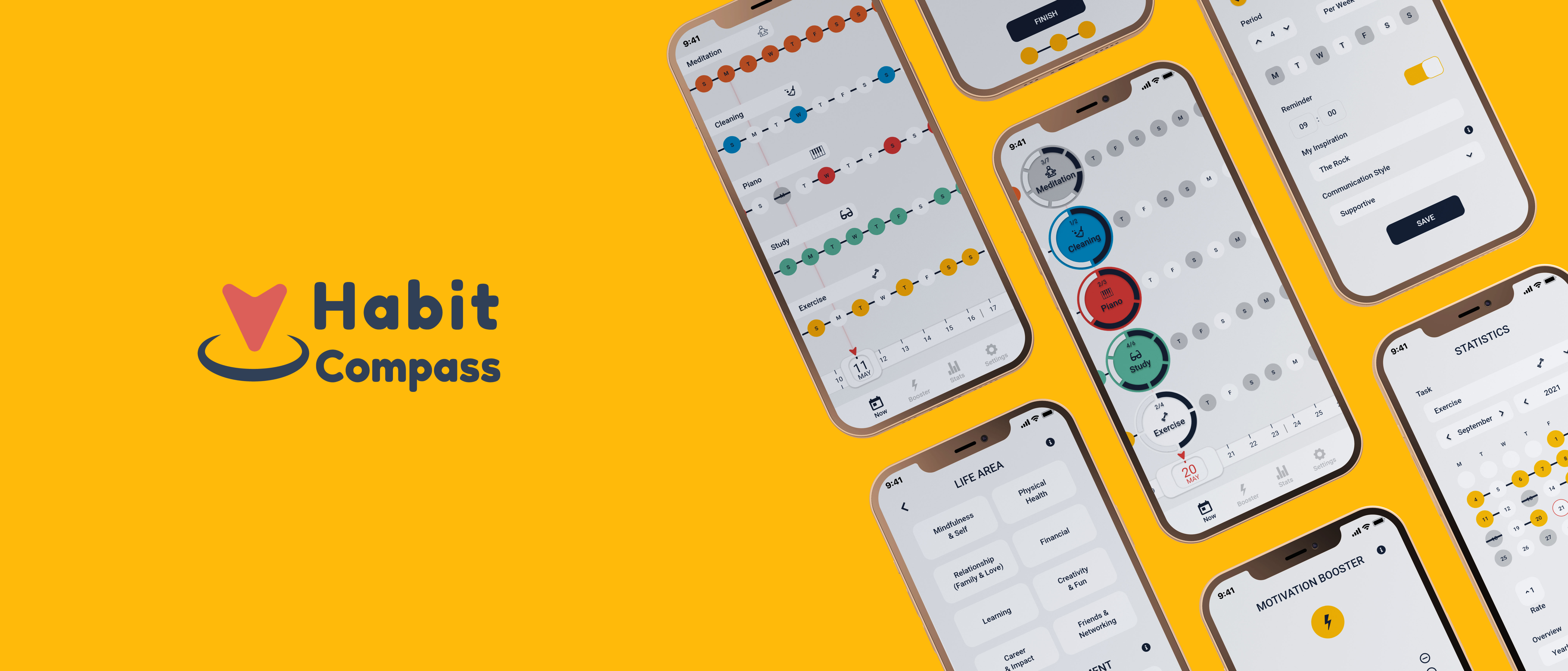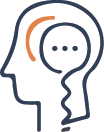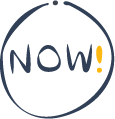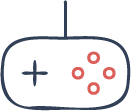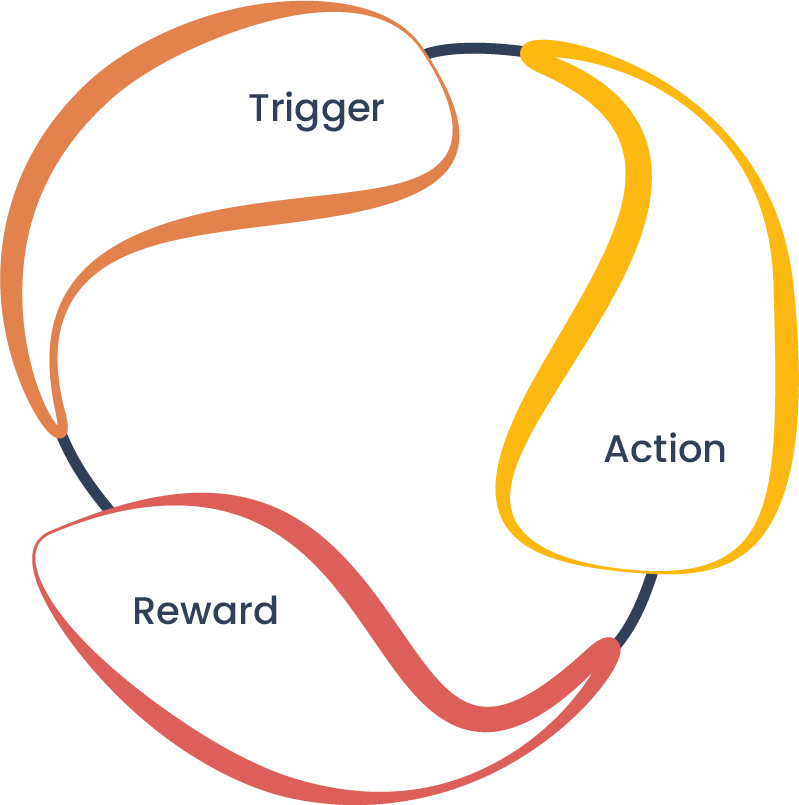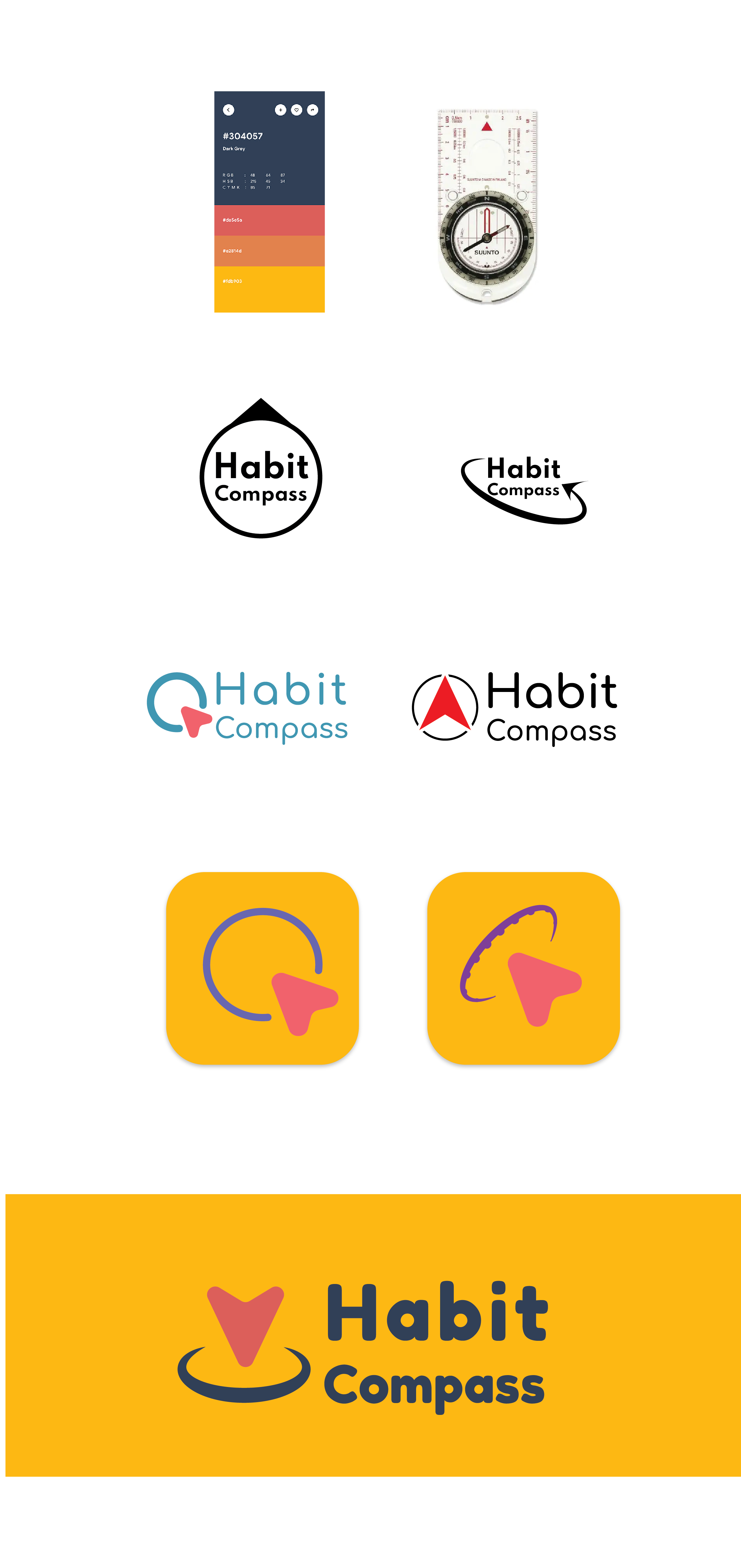Testing
Tests were done by observing users as they tried the prototype freely with minimal guidance. Tests were performed throughout the design process. The main interface points required for the test were:
- Using dashboard
- Creating a new habit
- App navigation
Unfortunately the dashboard test was relatively weak, the finger screen sliding and playfulness did not go smoothly and the users fled to other pages. The key takeaway is the reaction of people to the visual overload on the screen. In this case the solution was to clear buttons and options and focus on the base option.
Dashboard elements
The design process forced me to clean up and fine-tune the mass of functions that have accumulated throughout the research, Despite this, each has its own magic and unique solution it provides with an emphasis on a same design language.
